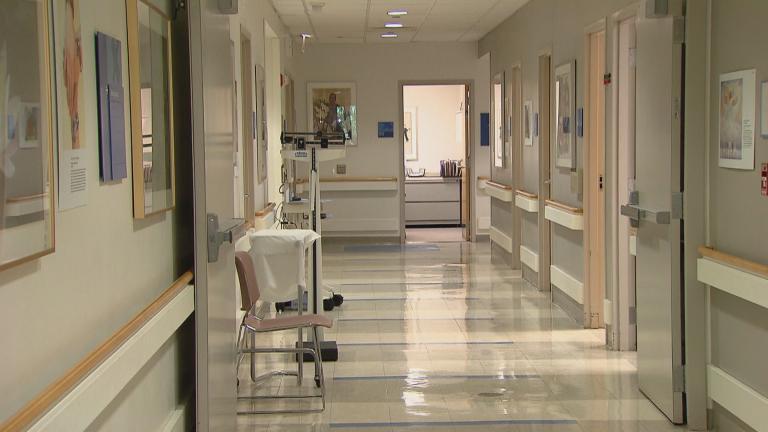For pregnant women, current fetal monitoring devices are a cumbersome array of wires and tape that require constant adjustment and, quite literally, tether the patient to a hospital bed.
Now a team of researchers at Northwestern University has developed a suite of wireless devices that can do all that current monitors do — but at much less cost — and all while freeing up the expectant mother.
John Rogers is the leader of the research team and a world-renowned bioelectronics pioneer known for developing cutting-edge wireless medical monitors for a variety of uses.
Rogers says the new pregnancy monitors will collect “pretty much the full suite of data that you would collect in the most sophisticated hospital setting traditionally done with wired devices that involved sensors coupled to the woman’s body.”
He says the new monitors not only ditch the wires, but are cheaper and provide superior monitoring than the devices now typically used in hospitals.
Rogers said the fact that the data from the sensors can be displayed on a smartphone – also helps keep costs down.
“Thinking about deployability and cost effectiveness we thought that would be the way to go,” said Rogers. “To not only free the expectant mothers from all of the constraints associated with the wires, but also decouple from the sophisticated hospital equipment, so that we can deploy these devices into more challenging parts of the globe where in many cases the need is the greatest.”
The work of Rogers and his team has attracted support from both the Bill & Melinda Gates Foundation as well as Save the Children.
“There was a detailed cost analysis that we needed to go through with the Gates Foundation. Their primary interest is LMICs (Low and Middle Income Countries) – they don’t fund things that are high-cost in general as a rule of thumb,” said Rogers.
But he says that because the devices are fully rechargeable and reusable and you can use equipment that already exists in the form of smartphones to display the data “a lot of the back-end costs go away.”
When you calculate the cost of the monitors on a per patient, per day basis, “we are down to a cost of a few cents per patient per day,” said Rogers.
The new pregnancy monitors have been tested at Prentice Women’s Hospital and also in Africa in more challenging settings and have been able to maintain the fidelity and quality of the data, says Rogers.
He says they have not only demonstrated that the technology works, but have done “an actual scaled deployment in some of the most challenging and resource-constrained parts of the globe.”
“We did almost 500 mothers during childbirth in Zambia alone,” said Rogers. “That’s very powerful and ultimately what we are aiming to do with this research,” he said. “We’re trying to take hospital-level monitoring out of the hospital without sacrificing any level of quality in the data. Taking it out of the hospital and putting it anywhere and making it available to anyone around the globe – that’s the goal.”








